Victorian Edinburgh through the Magic Lantern In the second half of the 19 th century, Edinburgh was a popular tourist destination for those who had the leisure time and financial wherewithal to experience its wealth of historical and cultural delights. Detailed guide books, such as Blacks Guide to Scotland, were available to help them make the most of their stay and stage-coach excursions and railway and paddle-steamer tours took them to attractions in the surrounding area, and further afield to the Isle of Bute, the Trossachs and the Highlands. George Washington Wilson, an Aberdeen based, professional photographer, took photographs of Edinburgh from the 1860s. These were published as albumen prints, stereographs and magic lantern projection slides and sold as tourist souvenirs. This book combines text from Blacks Guide, published in 1868 (including a street map, drawings, plans and two guided walks around the City) with twenty six lantern slide photographs taken by Wilson. 

 The Magic Lantern The magic lantern was the predecessor of the pre-digital slide projector.
The Magic Lantern The magic lantern was the predecessor of the pre-digital slide projector.
The first magic lanterns were made in the mid-1600s by natural philosophers, (early scientists) who were exploring the nature and commercial potential of optics. Light sources and lenses improved throughout the 1700s and 1800s and, as a consequence, it was possible to show bigger, brighter and clearer pictures to ever larger audiences. During Queen Victorias reign, magic lantern shows became established as mass-media entertainment. Shows could be lavish, theatrical events with all the razzmatazz of todays TV talent contests, with multiple lanterns to produce special effects. Magic lanterns were also used in Church and village halls and educational establishments for talks and lectures and, of course, in ordinary homes for family entertainment. 

 Some slides gave the illusion of movement.
Some slides gave the illusion of movement.
These included colourful kaleidoscopes, children skipping, a dentist pulling teeth and a man swallowing rats as he sleeps with his mouth open still a favourite with children (of all ages) who attend my magic lantern shows! At the white-knuckle end of the market, magic lanterns were used to create phantasmagoria horror shows, where terrifying devils, witches and the grim reaper were conjured out of thin air, with accompanying sound effects, in suitably scary venues. These shows employed the latest technology and created sophisticated illusions to entice customers to part with their money and be scared out of their wits. Magic lantern slides were made of glass. Early ones were hand painted and expensive to produce and buy but, from the mid-1800s, photographic images were applied to slides, mass-production followed and the magic lantern industry boomed. In its heyday, the 1890s, millions of slides were made, particularly in Britain, France and America, for entertainment, amusement, education, spiritual enlightenment and moral crusades. In Britain, lantern slides could be purchased or hired by mail-order direct from the manufacturers or from local, high-street outlets.
Photographic slides produced by George Washington Wilson were of the finest quality and their artistic composition and pin-sharp clarity can still make an audience gasp in surprise and delight when shown as part of my Victorian magic lantern shows. The Blacks Guide text and Wilsons photographs complement each other and enable us to step back in time to take a stroll around Victorian Edinburgh. I hope you enjoy the journey. Andrew Gill 









 Princes Street
Princes Street  Sir Walter Scotts Monument
Sir Walter Scotts Monument 

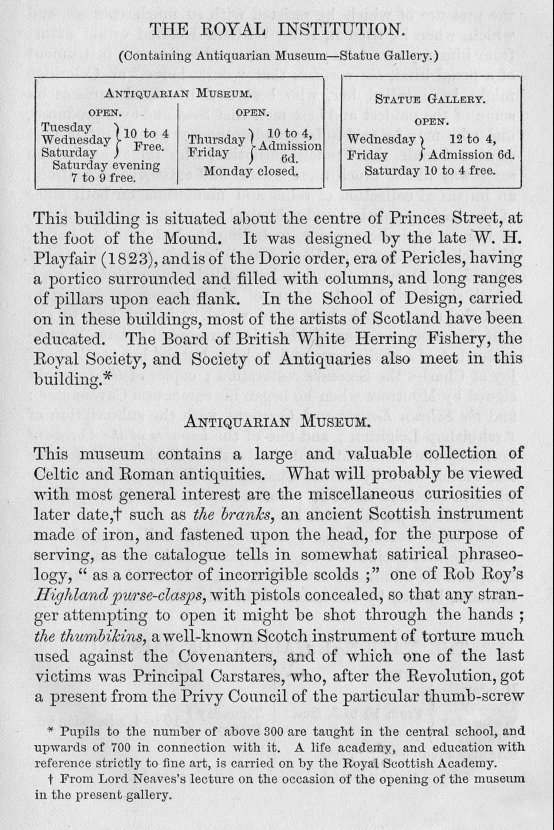



 Princes Street looking towards Calton Hill
Princes Street looking towards Calton Hill  Post Office and Waterloo Place
Post Office and Waterloo Place 
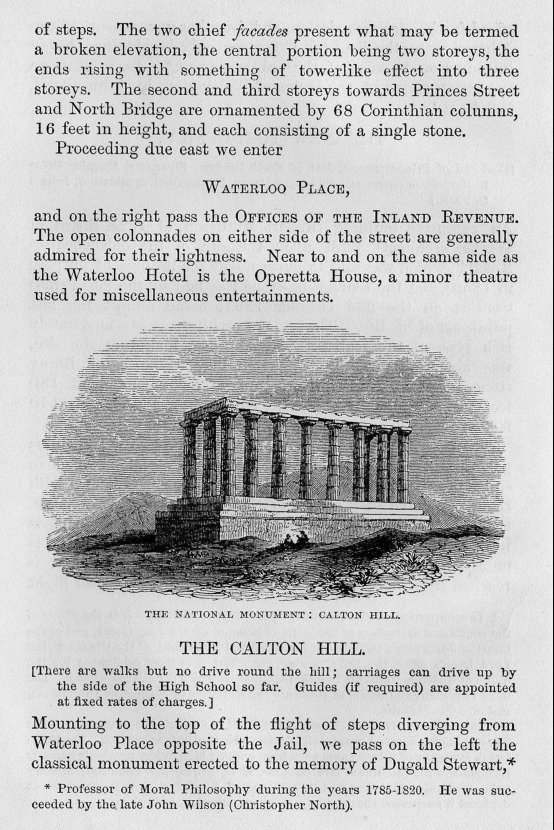
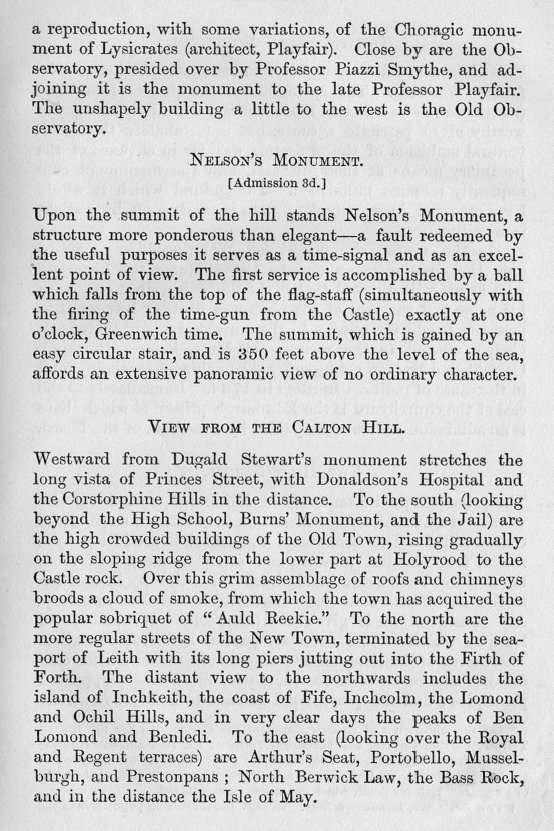
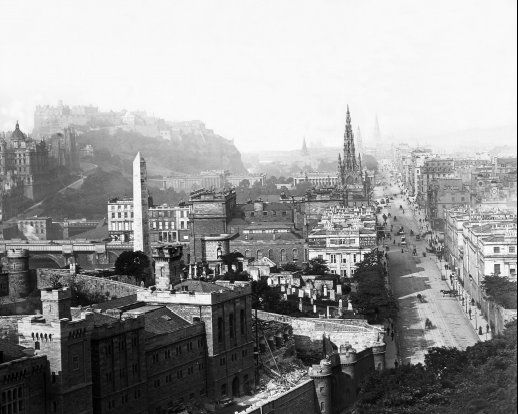 Princes Street from Calton Hill
Princes Street from Calton Hill 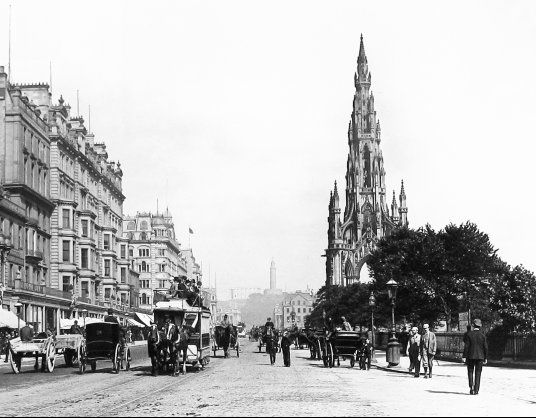
Next page
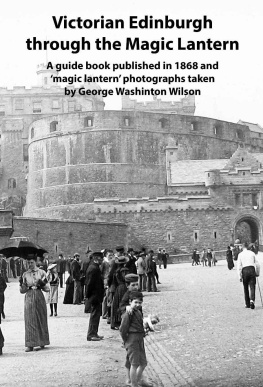



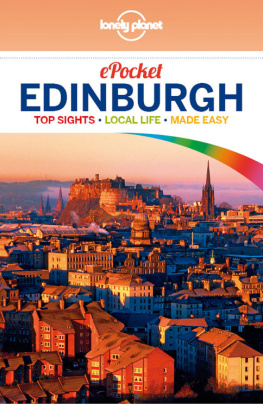
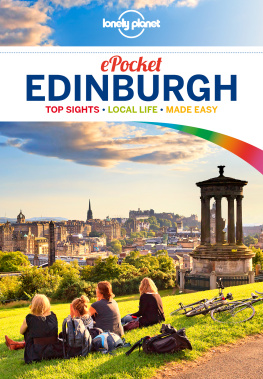
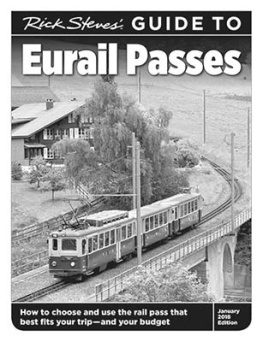
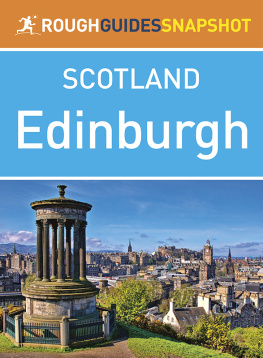
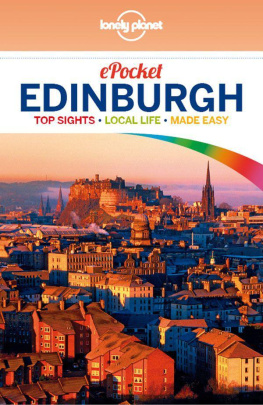
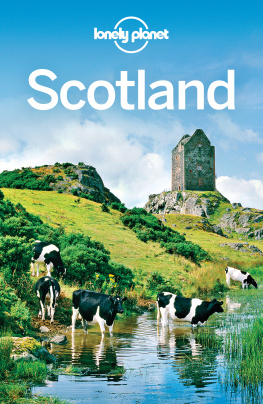



 The Magic Lantern The magic lantern was the predecessor of the pre-digital slide projector.
The Magic Lantern The magic lantern was the predecessor of the pre-digital slide projector.

 Some slides gave the illusion of movement.
Some slides gave the illusion of movement.









 Princes Street
Princes Street  Sir Walter Scotts Monument
Sir Walter Scotts Monument 





 Princes Street looking towards Calton Hill
Princes Street looking towards Calton Hill  Post Office and Waterloo Place
Post Office and Waterloo Place 


 Princes Street from Calton Hill
Princes Street from Calton Hill 